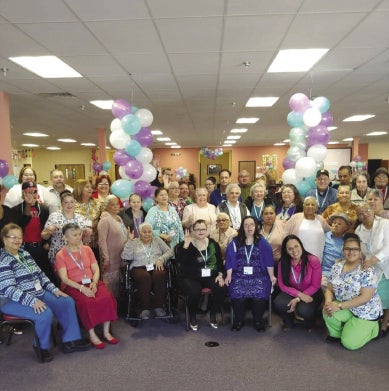Discussing long-term care options for an aging loved one is not a conversation people happily anticipate. In fact, it can be challenging and uncomfortable. It’s also a conversation that shouldn’t be put off.
Get Instant Access to This Article
Subscribe to Worcester Business Journal and get immediate access to all of our subscriber-only content and much more.
- Critical Central Massachusetts business news updated daily.
- Immediate access to all subscriber-only content on our website.
- Bi-weekly print or digital editions of our award-winning publication.
- Special bonus issues like the WBJ Book of Lists.
- Exclusive ticket prize draws for our in-person events.
Click here to purchase a paywall bypass link for this article.
Discussing long-term care options for an aging loved one is not a conversation people happily anticipate. In fact, it can be challenging and uncomfortable.
It’s also a conversation that shouldn’t be put off.
Discussing preferred options with loved ones early improves their chances of maintaining their quality of life. Whether the desire is to receive care at home, live in a senior community or long-term facility, or move in with a family member, a discussion about options should not wait until the last minute.
Advanced planning matters because it’s hard to predict when the moment of decision will come. So says Greg Lindstrom, owner and director of Visiting Angels Worcester, the local franchise home care agency he founded in 2005. Often, adult children are blindsided when an aging parent becomes ill and needs care. “It can be shocking when suddenly, Mom and Dad need care,” he said.
Follow the tips below for knowing when it is time to talk and how to have a productive conversation with your aging loved one:
1. Start today
Working in advance allows your loved one time to process options and clearly state their goals and desires. Waiting until a health issue forces the conversation can lead to high-stress, poor decisions and hurt feelings.And there is a lot of planning that people can do for themselves.
Lindstrom recommends people in their 50s consider long-term care insurance, for starters. Many people assume health insurance will pay for home care or assisted living, but it usually doesn’t. In either case, care usually costs thousands of dollars per month, Lindstrom said.
“People might not be crazy about paying for it, but more and more people are trying to do it,” Lindstrom said, of the monthly premiums.

2. Be sensitive
Irene Hernandez, program director of Active Life Adult Day Health Center in Fitchburg, takes an engaged approach with the elders she works with. Hernandez said many aging people are guarded, thinking if they start the conversation about the future, they’re inviting death. “I know at their age, they’re feeling vulnerable,” she said.
“I try to talk to them just to support them in thinking about it, because they won’t,” Hernandez said. She recommends asking an aging loved one “What do you want?”
3. Be prepared
Familiarize yourself with options that are in your area. Before you begin a discussion with loved ones concerning care options, know what options are available. Each choice has pros and cons, and it is best to have a full understanding of the good and the bad before you begin talking to your loved one. Lindstrom recommends people connect with their local elder services agency for a list of resources.
4. Listen
Your idea of the best long-term care option might not be the same as that of your loved one. Genuinely work to understand their point of view and why they might prefer staying at home or why they view a community as their best option.
5. Communicate
Involve family members in the conversation, and don’t wait until diseases of aging have already arrived. Heather Dobbert, clinical integration behavioral health case manager for Worcester-based insurance plan Fallon Health, said. It’s important for people to start talking about their care preferences early. She recommends everyone in their 60s should be having these conversations proactively, ensuring that their spouse and children – or other close family members – are all on the same page.
“The biggest gift you can give your family is the gift of communication. There’s really no greater gift,” Dobbert said.
Sources: Alzheimer’s Association; AARP; The Conversation Project

